Continued from: 10-6, 15-11, 20-16, 25-21.
5) The Big Meet
Original Air Date: October 26, 1950
This was perhaps the best of the classic Joe Friday undercover narcotics buy stories just because the risks were so outrageous. Going up to buy money from drug dealers and hoping to bluff your way through with a wad of cash mixed with newspapers and worth about 5% of what you’re paying is a tense enough situation particularly when much of the “cash” is newspaper. However, when it appears that the drug dealers have managed to lose your fellow officers tail, you’re looking a suspenseful classic.
4) The LSD Story
Original Air Date: January 12, 1967
This episode is perhaps the most definitive episode of the 1960s Dragnet as it’s known by people who weren’t even into Dragnet. The show does a great job portraying how those who are charged with enforcing the law are often frustrated by the law when it failed to deal with an issue like LSD use. The episode is often known as the Blue Boy episode for the central suspect Benji Carver who first appears under influence of the drug with his face painted blue. The downbeat ending was beautifully done by Webb both from a directing and acting standpoint.
For some, this represented a hard hit back against the emerging counterculture. When Dragnet had left the air in 1959, it’d been a tired franchise worn out by nearly 600 radio and TV performance over the course of the decade. This episode began a new life with this episode as Friday re-emerged as the rock solid hero we needed in a time when everything was shifting including cherished values.
For many advocates of legalized drugs, this episode began a lifelong hate affair with Webb and Dragnet that continues to this day.
3) The City Hall Bombing/ The Human Bomb
Original Air Date: July 21, 1949 (Radio)
Original Air Date: December 16, 1951 (Television)
This story is quintessential Dragnet. A man holding a bomb is threatening to blow up city hall if the police don’t release his brother from county lock up and time is running out. Friday and Romero opt to try and stop the scheme at the risk of their own lives. The episode manages to mix the best elements of Dragnet: humanity, professionalism, and realistic danger and excitement. The end scene is a classic and sets the tone for the series. Too often, fictional cops were portrayed as almost superhuman or buffoons.The Human Bomb gives us a portrait of brave but cautious men who can make mistakes like everyone else. The story was great over radio and it was the perfect selection to lead off Dragnet over television in 1951.
2) Dragnet 1966
Original Air Date: January 27, 1969
From pure quality of the production, this may be the greatest Dragnet production ever. Friday returns from vacation early to investigate the disappearance of three missing women. This was a made for TV movie and it took full advantage of its length to create a fully fleshed out thriller with amazing twists and turns, and one of Joe Friday’s finest action moments ever.
The film provides the context through which Joe Friday is commonly understood It includes the dynamic, “Quirk in the Law” speech and Dragnet’s earliest attempts at taking on race relations. The suspect in that speech identifies Friday as an iconic figure when he calls him “the immortal sergeant..”
In addition to these dramatic features, Dragnet 1966 includes some great comic relief, most notably Virginia Gregg has the head of a matrimonial bureau. In addition, the impending retirement of Bill Gannon is a source of great comedy.
Sadly, this film is less well-known than it should be as it was not replayed often, wasn’t re syndicated with the 1960s Dragnet TV shows, and is only legally available as an extra on the Dragnet 1968/Season 2 DVD, so many Dragnet fans haven’t seen it. This is a pity as it is was a true classic.
1) The Big Departure
Original Air Date: March 7, 1968
Dragnet is often accused of being a forum where Jack Webb pushed his political views. However, Dragnet’s ideas were not seen as all that political at the time. What we know of Webb’s personal politics is really quite limited. What we can say safely of Webb’s political beliefs was that he was anti-Communist, supportive of the Civil Rights movement, and pro-law enforcement. However, this episode provides a good view of Webb on America.
The episode tells of Friday and Gannon encountering a young gang of thieves who look down on society and plan to flee to island to start a just, peaceful, and moral nation. To this end, they begin robbing stores to acquire needed supplies and injuring anyone who stood in their way. (Irony alert.)
“The Big Departure” really was born of its times. The 1960s radicals, many of whom in one form or another urged young people to tune out. There were all types of opportunities to destructively turn away from a society with its troubles. There was the drug culture, hippy communes, and terrorist organizations like the Weather Underground, all of which urged people to tune out of traditional American processes and in many cases, to violate the laws of the land.
In “The Big Departure,” Friday and Gannon don’t bother arguing that America is perfect, rather they argue that its worthwhile and that the boys need to engage in life, not run away from it.
Webb understood what it was to be angry about injustice. When he was 26, he made a radio series, “One Out of Seven” that dealt with racial prejudice and intolerance. By 1968, the situation had begun to improve. But, this only happened because people worked to make things better, not escaping to a fantasy land.
At the core of Dragnet was a belief in the rule of law. The police officers were the good guys because they enforced the laws and made America work, giving democracy a chance to work. As Friday said, “Don’t try to build a new country. Make this one work. It has for over four hundred years; and by the world’s standards, that’s hardly more than yesterday.” That is the heart of the series.
If you enjoyed this post, you can have new posts about Detective stories and the golden age of radio and television delivered automatically to your Kindle.
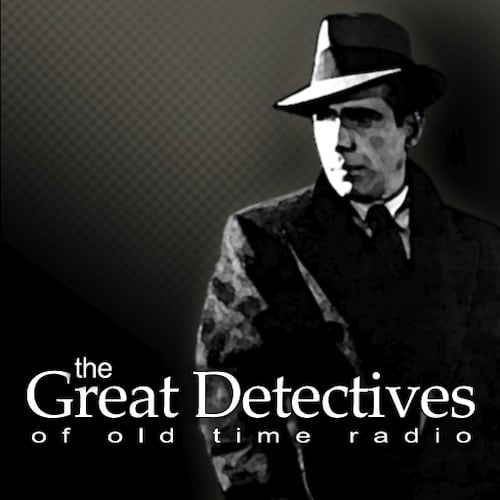
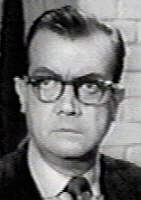 Joseph Kearns was one of radio’s most talented and most used actors. His first classic role was in the children’s Christmas radio serial, The Cinnamon Bear when he played Crazy Quilt Dragon in 1937.
Joseph Kearns was one of radio’s most talented and most used actors. His first classic role was in the children’s Christmas radio serial, The Cinnamon Bear when he played Crazy Quilt Dragon in 1937.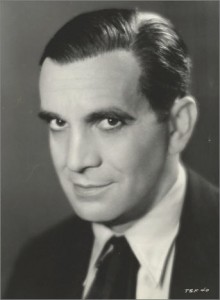 Jolson was one of America’s premier entertainers beginning with his days in Vaudeville and his starring role in the first feature length talkie, The Jazz Singer. Jolson also brought his unique musical style to radio in 1932 for Chevrolet. He’d continued to be a ratings draw for many years with programs such as Shell Chateau and the Kraft Music Hall. Jolson’s popularity in the early 1940s but picked up after the war with the release of The Jolson Story and then Jolson Sings Again. This made Jolson in demand both as a star and as a guest performer. Throughout his career, he remained one of his era’s greatest entertainers, and also one of its most beloved radio stars.
Jolson was one of America’s premier entertainers beginning with his days in Vaudeville and his starring role in the first feature length talkie, The Jazz Singer. Jolson also brought his unique musical style to radio in 1932 for Chevrolet. He’d continued to be a ratings draw for many years with programs such as Shell Chateau and the Kraft Music Hall. Jolson’s popularity in the early 1940s but picked up after the war with the release of The Jolson Story and then Jolson Sings Again. This made Jolson in demand both as a star and as a guest performer. Throughout his career, he remained one of his era’s greatest entertainers, and also one of its most beloved radio stars.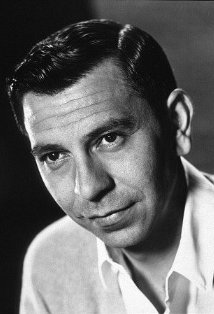 Jack Webb came to radio at the right time in 1946. He began in San Francisco on the historic KGO-AM. The station was trying to compete for national radio attention in a national radio market dominated by Hollywood and New York. He tried out several formats including a Comedy/Variety show and a news commentary program before with writer Richard Breen, he created the role of Pat Novak for Hire. The sardonic sometimes detective Novak spoke in a way that was unique to that time or any other.
Jack Webb came to radio at the right time in 1946. He began in San Francisco on the historic KGO-AM. The station was trying to compete for national radio attention in a national radio market dominated by Hollywood and New York. He tried out several formats including a Comedy/Variety show and a news commentary program before with writer Richard Breen, he created the role of Pat Novak for Hire. The sardonic sometimes detective Novak spoke in a way that was unique to that time or any other.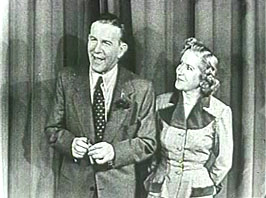 Burns and Allen remain one of the most successful and memorable husband-wife comedy teams of all time. Their performances on radio began in the mid-30s with those that were variety radio programs . The programs featured an announcer, band leader, and various character actors and the whole act was doing the show with plot contrivances thrown in usually centered on a rivals as their characters remained single even after they’d been married.
Burns and Allen remain one of the most successful and memorable husband-wife comedy teams of all time. Their performances on radio began in the mid-30s with those that were variety radio programs . The programs featured an announcer, band leader, and various character actors and the whole act was doing the show with plot contrivances thrown in usually centered on a rivals as their characters remained single even after they’d been married.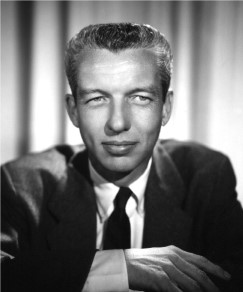 Bob Bailey did some of his best work in relative obscurity. He performed from 1946 into the mid-1950s as detective George Valentine in Let George Do It in a series that was a West Coast only production of the Don Lee mutual network, helping to bring to life the stories of up and coming writers such as Jackson Gillis. Outside of this, his radio work up until 1955 was mostly a slew of character roles on such reliable sources of such work as Cavalcade of America and Lux Radio Theater. However, in October 1955, he made his most lasting mark on radio when he became the fourth on-air Johnny Dollar.
Bob Bailey did some of his best work in relative obscurity. He performed from 1946 into the mid-1950s as detective George Valentine in Let George Do It in a series that was a West Coast only production of the Don Lee mutual network, helping to bring to life the stories of up and coming writers such as Jackson Gillis. Outside of this, his radio work up until 1955 was mostly a slew of character roles on such reliable sources of such work as Cavalcade of America and Lux Radio Theater. However, in October 1955, he made his most lasting mark on radio when he became the fourth on-air Johnny Dollar.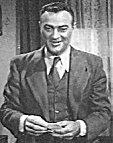 Lawrence was an amazingly versatile actor. His starring roles included playing Ellery Queen and taking on the role of Archie Goodwin on The New Adventures of Nero Wolfe. However, Dobkin was able to play a stunning of variety of character roles as a true man of a thousand voices. On the Saint, he played sidekick and cab driver Louie, but when star Tom Conway was struggling with alcoholism, he had to take over the role of the debonair Simon Templar while Conway was indisposed. His ability to change voices and take on any characterization made him a true asset to producers of programs such as The Whistler, Lux Radio Theatre, Let George Do It, and Escape.
Lawrence was an amazingly versatile actor. His starring roles included playing Ellery Queen and taking on the role of Archie Goodwin on The New Adventures of Nero Wolfe. However, Dobkin was able to play a stunning of variety of character roles as a true man of a thousand voices. On the Saint, he played sidekick and cab driver Louie, but when star Tom Conway was struggling with alcoholism, he had to take over the role of the debonair Simon Templar while Conway was indisposed. His ability to change voices and take on any characterization made him a true asset to producers of programs such as The Whistler, Lux Radio Theatre, Let George Do It, and Escape.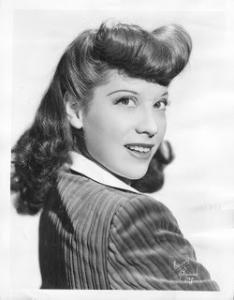 Dinah Shore came to stardom on Eddie Cantor’s Time to Smile program in 1940. Soon, she had her own show for Bristol Myers in 1941 and would be a much sought out performer leading shows for Birds Eye frosted foods, Ford, Philip Morris, and Chevrolet. She was one of America’s most popular singers throughout radio’s golden age. Her popularity made her a guest star for programs from Lights Out to Burns and Allen. She was one of radio’s most popular and talented personalities in an era filled with talented and popular personalities.
Dinah Shore came to stardom on Eddie Cantor’s Time to Smile program in 1940. Soon, she had her own show for Bristol Myers in 1941 and would be a much sought out performer leading shows for Birds Eye frosted foods, Ford, Philip Morris, and Chevrolet. She was one of America’s most popular singers throughout radio’s golden age. Her popularity made her a guest star for programs from Lights Out to Burns and Allen. She was one of radio’s most popular and talented personalities in an era filled with talented and popular personalities.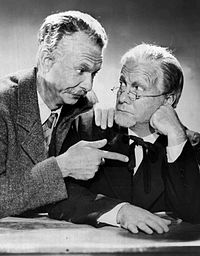 “And now let’s see what’s going on down in Pine Ridge.” With these words, millions of Americans were taken on a journey to the land of Pine Ridge and two leading storekeepers named Lum ‘n Abner who couldn’t quite keep to minding the store, starting gold mines, and even building a rocket ship to the moon.
“And now let’s see what’s going on down in Pine Ridge.” With these words, millions of Americans were taken on a journey to the land of Pine Ridge and two leading storekeepers named Lum ‘n Abner who couldn’t quite keep to minding the store, starting gold mines, and even building a rocket ship to the moon.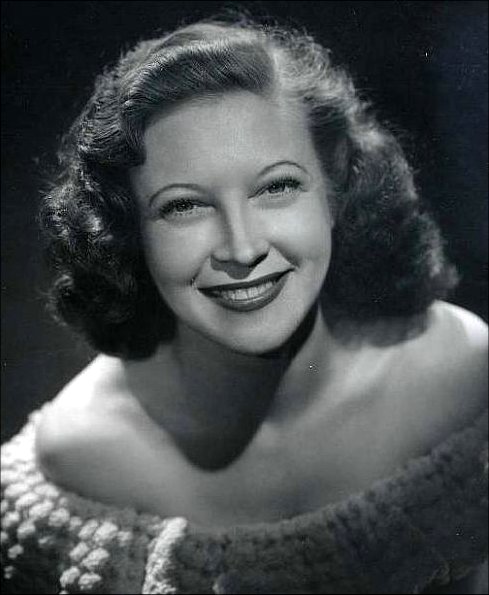
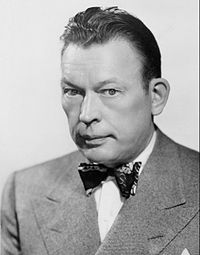 Fred Allen was one of radio’s most remembered and most beloved satirists, and most successful personalities. Beginning in 1929, Allen embarked on a 20 year career in radio beginning with the Little Show and proceeding through a wide variety of sponsors from Hellman’s Mayonaise to Texaco Fire Chief Gasoline. Allen famously “feuded” with fellow-comedian Jack Benny for years creating some of radio’s most memorable comedy moments. Allen also original Allen’s Alley which had a small town of hilarious characters offer their witty comments on the news of the day with the most famous citizen being Alan Reed’s Falstaff Openshaw. Allen often ran into difficulty with network censors over the issues that would seem trivial today. In one instance, censors objected to his wife Portland Hoffa saying she’d wasted a day at the rodeo for fear of offending rodeo fans. Thankfully for everyone, Allen was talented enough to work around the network’s pettiness and most Americans had a far better sense of humor than the networks as evidence by Allen’s long-term radio success.
Fred Allen was one of radio’s most remembered and most beloved satirists, and most successful personalities. Beginning in 1929, Allen embarked on a 20 year career in radio beginning with the Little Show and proceeding through a wide variety of sponsors from Hellman’s Mayonaise to Texaco Fire Chief Gasoline. Allen famously “feuded” with fellow-comedian Jack Benny for years creating some of radio’s most memorable comedy moments. Allen also original Allen’s Alley which had a small town of hilarious characters offer their witty comments on the news of the day with the most famous citizen being Alan Reed’s Falstaff Openshaw. Allen often ran into difficulty with network censors over the issues that would seem trivial today. In one instance, censors objected to his wife Portland Hoffa saying she’d wasted a day at the rodeo for fear of offending rodeo fans. Thankfully for everyone, Allen was talented enough to work around the network’s pettiness and most Americans had a far better sense of humor than the networks as evidence by Allen’s long-term radio success.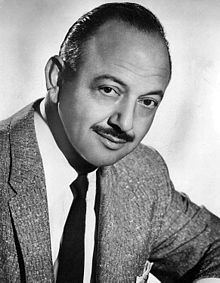 Mel Blanc is perhaps the greatest voice in Warner Brother’s golden age of animation but he was just as vital to comedy on radio. He’s radio credit list reads like a Who’s Who of radio comedy with him appearing of the programs of such stars as Abbott and Costello, Jack Benny, Burns and Allen, Danny Kaye, the Great Gildersleeve, and Bob Hope. He also had a show of his own from 1946-47. He had many notable characters including the “Happy Postman” for many years on the Burns and Allen show. Of course, his cartoon work came into play. During one episode of Abbott and Costello, Bugs Bunny actually appeared in the day’s story. And for the Armed Forces Radio Services programs such as GI Journal, Blanc took the stuttering of his Porky Pig characted and amped it up to create the create the character of Private Sad Sack. For both civilian and military audiences, Blanc provided unforgetable characterization and great comic timing that has made him an indispensable part of radio’s golden age.
Mel Blanc is perhaps the greatest voice in Warner Brother’s golden age of animation but he was just as vital to comedy on radio. He’s radio credit list reads like a Who’s Who of radio comedy with him appearing of the programs of such stars as Abbott and Costello, Jack Benny, Burns and Allen, Danny Kaye, the Great Gildersleeve, and Bob Hope. He also had a show of his own from 1946-47. He had many notable characters including the “Happy Postman” for many years on the Burns and Allen show. Of course, his cartoon work came into play. During one episode of Abbott and Costello, Bugs Bunny actually appeared in the day’s story. And for the Armed Forces Radio Services programs such as GI Journal, Blanc took the stuttering of his Porky Pig characted and amped it up to create the create the character of Private Sad Sack. For both civilian and military audiences, Blanc provided unforgetable characterization and great comic timing that has made him an indispensable part of radio’s golden age.